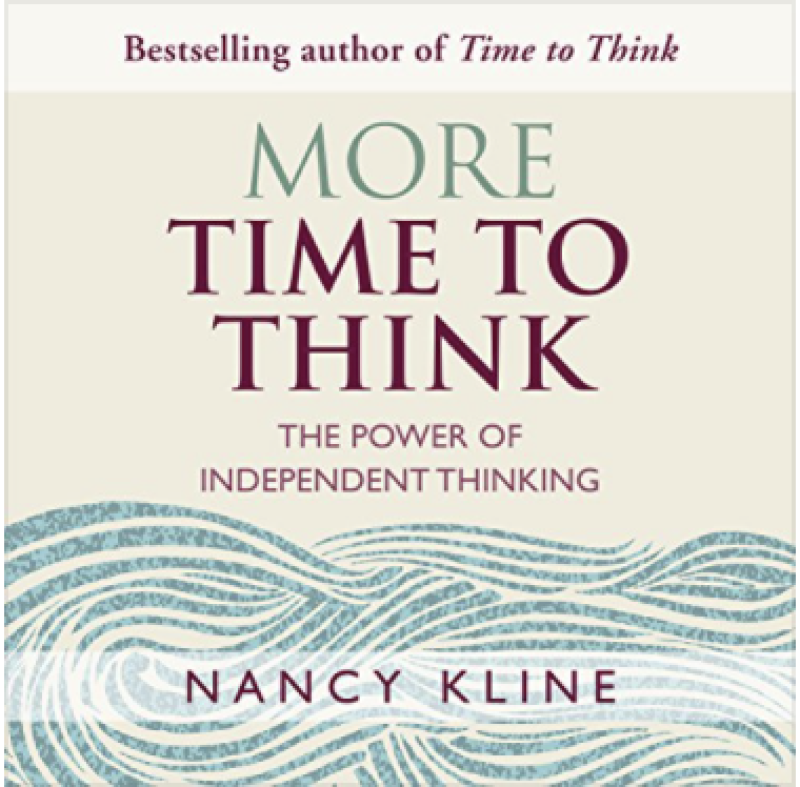The power of independent thinking
More Time to Think: A Way of Being in the World. By Nancy Kline
More is Nancy Kline’s 2nd book after time to think which made her name. She actually said: the greatest gift we can offer each other is a framework in which to think for ourselves. I love the audible audiobook version of this because listening to Nancy’s voice is far more powerful than just reading it […]
85 / 100
My Rating
My Rating

More is Nancy Kline’s 2nd book after time to think which made her name.
She actually said: the greatest gift we can offer each other is a framework in which to think for ourselves.
I love the audible audiobook version of this because listening to Nancy’s voice is far more powerful than just reading it on the page. I recommend you have both the audio version and the book which you can highlight and annotate. If you’re really serious about Leadership and getting the best out of the people around you then you will apply the neuroscience insights & research that is contained within. My top takeaways:
- Learn the 10 components of the thinking environment. in detail these are:
- Attention and listening without interruption being interested in what the person will say next. Attention is an act of creation. Listening to reply is different from listening to ignite and generate thinking. As the thinker knowing you will not be interrupted frees you to truly think for yourself.Remember they are the creator of the world.
- Equality. Regarding each other as thinking peers. Getting equal terms and attention. Honouring boundaries. Even a hierarchy people can be equal as thinkers. Knowing you will have your turn improves the quality of your attention.
- Ease. Offering freedom from internal rush or urgency. He is create; urgency destroys. When it comes to helping people think for themselves sometimes doing means not doing.
- Appreciation. Practising a 5:1 ratio of appreciation to criticism. The human mind thinks more rigorously and creatively in the context of genuine appreciation. When giving appreciation practice the 3 x S’s: be succinct, be sincere & be specific.
- En-couragement. Building courage to go to the unexplored edge of ideas by eliminating competition between thinkers. To be ‘better than’ is not necessary to be good.
- Information. What are you not facing? Supplying the facts. Dismantling denial. Withholding or denying information results in intellectual vandalism. Facing what you’ve been denying frees you to think clearly.
- Feelings. What is the matter with us? Allowing appropriate emotional release to restore thinking. Fear constricts everything, especially thinking. Crying can make you smarter. After laughter thinking improves.
- Diversity and Difference. Who are you really? Encouraging divergent thinking. Insuring diverse group identities. The mind works best in the presence of reality. Reality is diverse. Incisive questions. Where is freedom? Removing and selecting assumptions that block thinking. Right inside an incisive question lies the liberation of the human mind.
- Place. Does it matter that you matter? Creating a physical environment that says back to people, you matter. When the physical environment firm is their importance, people think at their best. When we respect our bodies, our thinking improves.
- Part 2 – the practice of thinking pairs, the positive philosophical choice, untrue limiting assumptions that we live as if they are true. Nancy covers various approaches to helping people think for themselves. Especially: coaching in a thinking environment, mentoring, dialogue, Mediation, group work, transforming meetings, time to think council & facilitation.
– Jonathan Bowman-Perks
Sign up to my Newsletter
Sign up to Jonathan’s newsletter for regular updates.